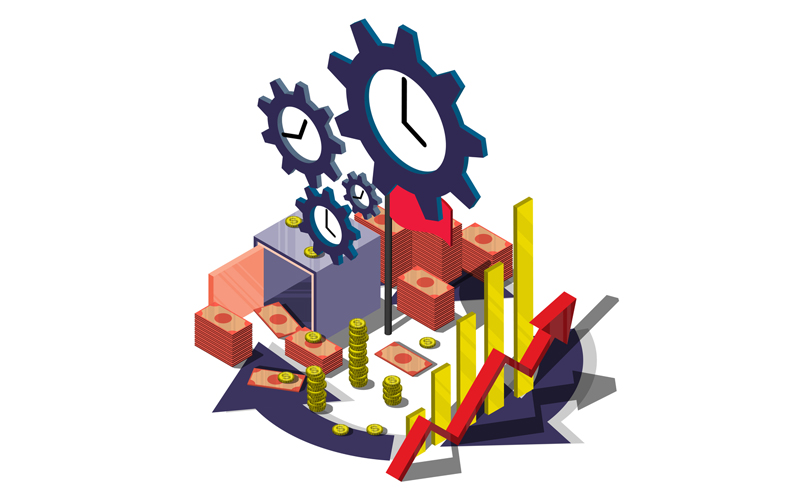
A leveraged market like forex has shown that advanced money management techniques are possible. As with any engagement in the markets, there is always a risk. However, some methods are still inherently riskier than others.
The following sections will be divided according to less risky techniques and then those riskier, along with the pros and cons of each specific one (and a few solutions to make smarter decisions).
Understanding these practices should only serve as a guide because successfully implementing them requires careful number-crunching and considering numerous technical factors, all of which significantly impact the success rate.
Less risky money management techniques
Assuming one does not break their rules and recognizes the importance of consistent position sizing, many traders use the techniques below with varying degrees of success.
Fixed percentage technique
This procedure is one of the simplest and less risky of them all. Traders using this technique will decide what to risk per trade according to a fixed percentage of their overall account.
Unfortunately, there can never be a universally accepted figure as it’s dependent on numerous attributes. However, most genuinely risk-averse traders believe somewhere between 1% and 3% to be the line in the sand.
Let’s assume a trader risks $20 off their $1,000 account (2%). This percentage will remain the same even as the funds grow, meaning the $20 gradually increases to a larger amount while keeping a conservative risk across the equity overall.
Depending on the figure, using a fixed percentage can allow for absorption of long losing streaks, which is arguably the main benefit. A trader’s equity graph shows much less volatility due to the consistent position sizing, resulting in steadier gains.
One of the main drawbacks is fixed percentages result in slower account growth (although it’s more consistent).
Overall, this system can work best for all traders (especially those trading frequently) but is slower for swing and position traders who naturally have higher risk-to-reward ratios and can ‘play around’ with bigger profits.
‘Anti Martingale’ for reducing risk after every loss
Although not an official term, the ‘anti Martingale’ methodology, as the name suggests, is the opposite of the controversial Martingale system. In the latter, conventionally, a gambler doubles their bet for every loss hoping they will recover and even profit due to the increasing larger risk.
One part of ‘anti Martingale’ is reducing the risk after every loss and increasing it after every win (covered later). Although the system overall is somewhat better than otherwise, it is not immune to drawbacks.
Using the $1,000 account example from the previous section, if a trader’s equity dropped to $980 ($20 loss), on the next trade, they reduce the $20 by 2% rather than keeping it consistent (risk on the next trade is now $19.6 as this is the difference after calculating 2% from $20).
In the worst-case scenario, let’s say the trader went through a 5-trade losing streak. If they reduced their risk by 2%, the new risk amount on the 11th position is now $18.
Using a fixed percentage again, they would continue with 2% even as the account grows. This approach is very good for managing risk, but one experiences even slower account growth because as the equity drops, with lesser risk, it will always take more time to get back to a previous peak.
Frequent traders with smaller profit targets, and lower risk to reward ratios, could consider this method. Conversely, it wouldn’t make sense for long-term traders with bigger targets who can naturally absorb long losing streaks due to having a higher risk to reward ratio.
More risky money management techniques
We should preface that some of these techniques aren’t inherently dangerous. It all depends on the trader’s execution, trading style, and strategy. If poorly or haphazardly executed, these can quickly become unsafe.
‘Anti Martingale’ for increasing risk after every win
This approach is opposite to the previous one. Let’s use another example. A trader with a $1,000 account, in one position, makes a $100 gain risking $20 (2%). Instead of continually risking 2% of their account, they decide to double the risk to $40.
At this stage, they would be utilizing part of their profits and not any bit of their original equity. Let’s assume they succeed in making a 1:5 gain ($200 = $40 X 5). Out of the two positions, they would have made a total of $300.
Theoretically, a trader can keep doubling their risk after every set win, though then no one can predict a winning streak. The worst case is, on the next trade risking $80, just five consecutive losing trades set them back $400, $100 less than what they started with.
The trick with this approach is setting an optimal increase in the initial risk that accounts for the worst losing streak. It wouldn’t be recommendable for traders with smaller profits and frequent trading to employ this technique.
Traders with higher risk to reward ratios can utilize this method because using a larger profit off one position allows more ‘wiggle room’ even during a drawdown period.
Scaling in
‘Scaling in’ is an often contentious topic in many forex communities because it’s one of the riskiest techniques. However, it depends on how a trader performs this action.
‘Scaling in’ refers to adding more positions from an initial order with the hopes of gaining a substantial profit off one trade idea. A strategic way to ‘scale in’ is after a trade is in small profit where that portion essentially ‘pays’ for the next position while ensuring it is protected with a breakeven stop loss.
If a trader has forecasted a big move, they may consider ‘scaling in’ using this guide, provided they perform it at logical areas according to their strategy while risk-managing any previous order.
The riskiest part of ‘scaling in’ is adding multiple positions very close to the initial entry since this ‘eats up’ a large portion of margin, nearing the account to a margin call. Although if the position does move in one’s favor, it can result in incredible profits. Conversely, it only takes a tiny move in the opposite direction for an account to be blown.
Conclusion
Money management is arguably the single most crucial part of trading. If one considers any of these methods alternative to fixed percentages, they must thoroughly test and understand every element. Although the upside when some of these approaches are executed is phenomenal, robustly managing the downside means a trader can have a good night’s rest.







